Are you looking to add a bit of greenery to your home but don’t have much space or time? Then succulents may be just what you’re looking for!
Not only are these little plants beautiful, they’re also low-maintenance and easy to care for. One of the most common questions people ask about succulents is how often they should be watered.
In this blog post, we’ll discuss why watering practices differ from one environment or type of plant to another, as well as offer some tips on picking out the perfect succulent and properly caring for it in your home.
Read on to learn more about these wonderful plants so that you can bring the beauty and simplicity of them into your own living space!
What is a succulent?
Succulents are plants that have adapted over time to store water in their tissues, allowing them to survive the harsh conditions found in many climates.
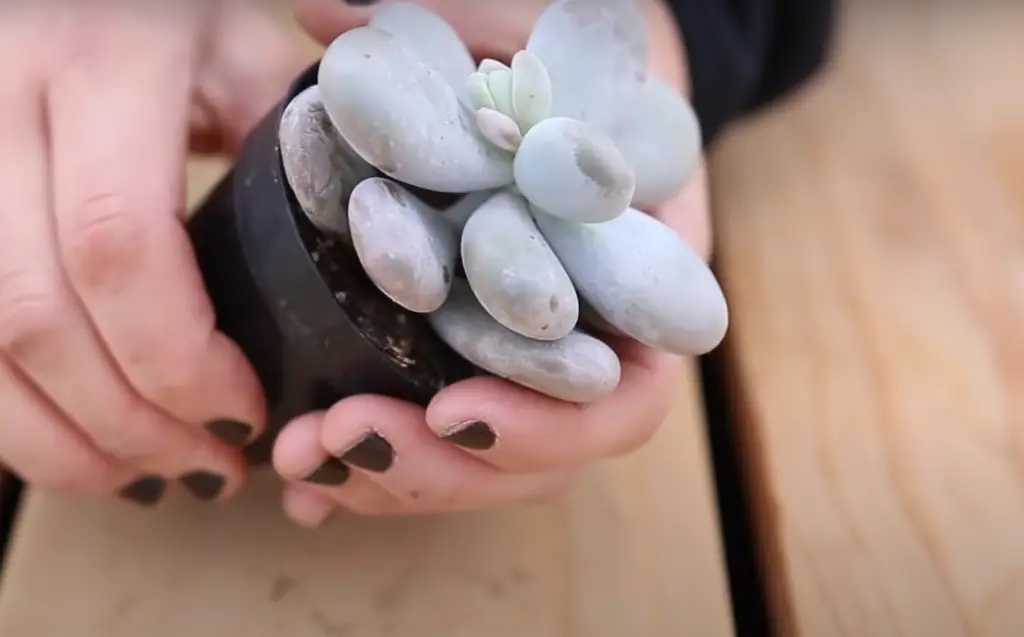
This storage of water also helps them thrive when given minimal care – making them perfect for those with busy schedules and limited space. They come in a variety of colours, shapes, and sizes to fit every home decor!
Types of succulents
Succulents are commonly divided into two categories: hardy and tender. Hardy succulents can withstand colder temperatures and require less frequent watering, while tender succulents need warm climates and more water to survive.
Depending on what type of climate you live in, one or the other may be better suited for your home.
How to propagate succulents?
Propagating your succulents is a great way to create more plants and bring unique varieties into your home.
When propagating from stem or leaf cuttings, be sure to use sharp scissors and sterilise them before cutting the plant. When propagating from seeds, it’s best to use a mixture of sand and soil as well as keep the containers at warm temperatures.
How often should you water a succulent?
The frequency of your succulent’s watering regime will depend largely on the type of plant and the environment it is in. In general, hardy succulents such as Echeveria and Sempervivum can do well with once-a-month waterings during warmer months, while tender succulents such as Aloe vera may need to be watered more frequently.
As a general rule of thumb, if the soil is still slightly damp after a few days, it’s best to wait until it has dried out completely before watering again. [1]
How much water does your succulent need?
When watering your succulents, it’s important to remember that they don’t need a lot of water. Too much and the soil will become too wet, which can lead to root rot. Instead, aim for deep but infrequent waterings – around once or twice a month during warmer months.
When in doubt, stick your finger an inch or two into the soil to check for moisture. If it’s dry, then it’s time to water!
How much sunlight does a succulent need?
Succulents need bright, indirect sunlight and a bit of air circulation to thrive.
Place them near a window that gets at least six hours of indirect sunlight per day and remember to rotate the pots occasionally so they get light from all sides.
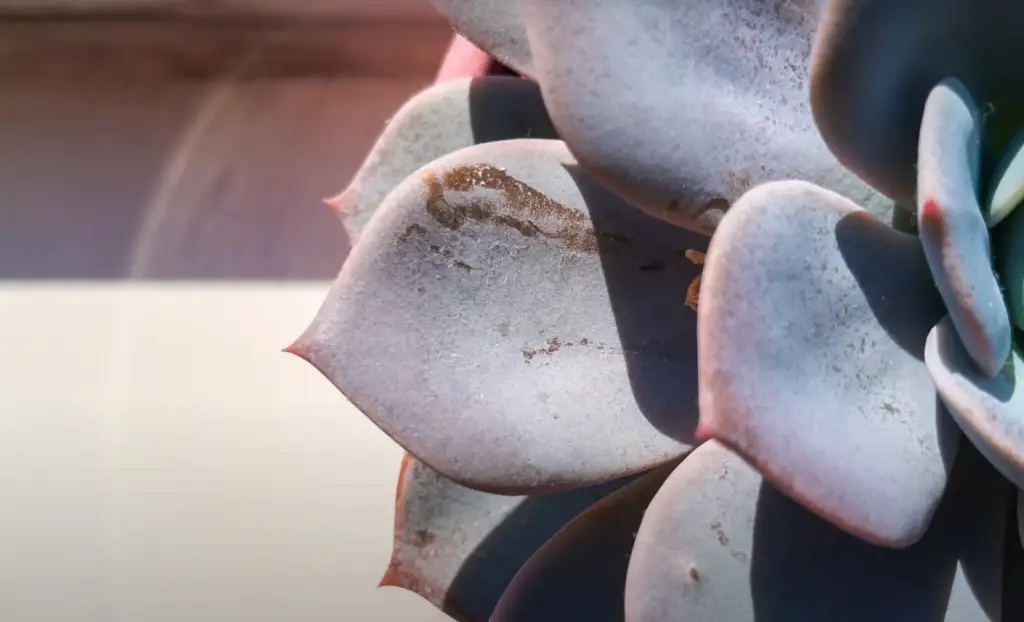
When it comes to air circulation, make sure your succulents aren’t in a sealed container and don’t place them too close together.
What things affect how much I water my succulents?
Other factors such as temperature, humidity, and the size of your plant can all affect how often you need to water your succulent. In general, if your succulent is in a warmer environment then it will need more frequent watering than one that is in a cooler environment.
Additionally, larger plants require more water than smaller ones. It’s also important to take into account the amount of light your plant is receiving. If it’s in a sunny spot, then you may need to water more often than one that’s in a shady area.
Finally, humidity levels can also affect watering frequency – plants in dry climates will need more water than those in humid areas.
Examples of how to water a succulent correctly
When it comes to watering succulents, the best approach is to use the “soak and dry” method. This means that you should give your plant a good soak with water until it runs out of the bottom of the pot and then let it completely dry out before watering again. If this isn’t possible, then try using a soil moisture metre to check the moisture levels.
If it’s too dry, then give it a good soak and if it’s still wet after a few days then wait until it has dried out completely before watering again. It’s also important to avoid getting water on the leaves of your succulent is this can cause them to rot.
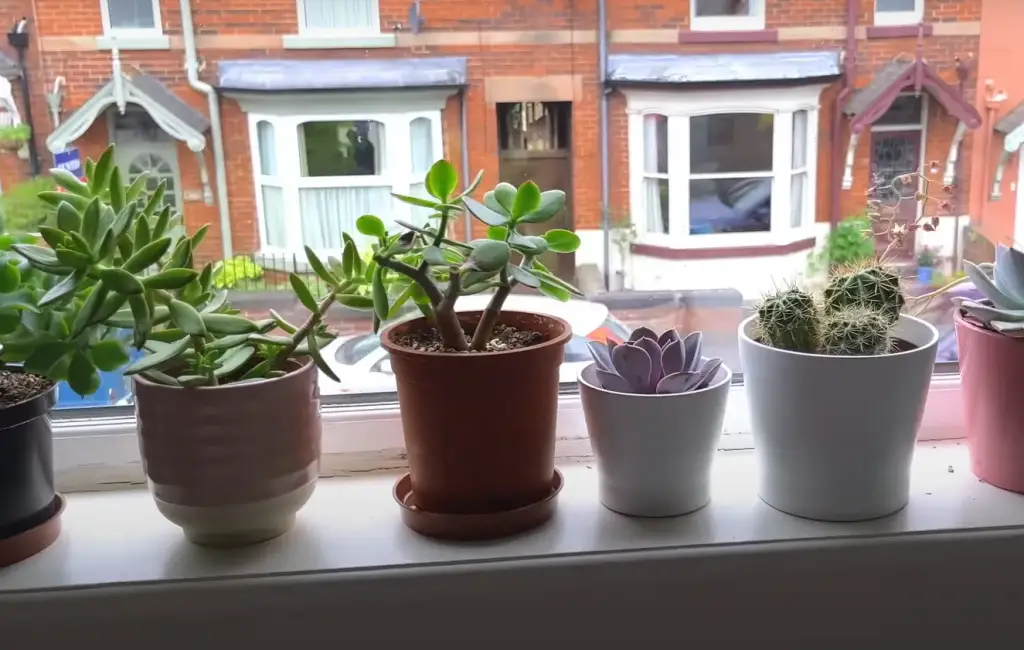
When caring for succulents, it’s important to remember that they are low-maintenance and don’t need a lot of water. With these simple tips, you can enjoy the beauty of these plants in your home with minimal effort! [2]
FAQ
How often do you water indoor succulents?
Indoor succulents typically require less frequent watering than outdoor plants. Generally, you should water indoor succulents once or twice a month during warmer months and slightly less often during cooler months.
Be sure to check the soil for moisture by sticking your finger into it before watering to make sure it’s dry before giving it any more water.
How do you revive a dying succulent?
If your succulent is looking limp or wilted, it may be in need of some extra love. First and foremost, check the soil to make sure it’s not over- or under-watered – if it’s too wet then allow it to dry out completely before watering again; if it’s too dry then give it a good soak.
If the soil is still damp, then move your plant to an area with more light as it may be getting too little. Additionally, trim off any dead or discoloured leaves and make sure there is enough airflow around the plant. With some extra care and attention, you should be able to revive a wilting succulent.
How much water do succulents need?
Succulents don’t need a lot of water – in general, they should only be watered once or twice a month during warmer months. The frequency of watering will vary depending on the type and size of the plant as well as the environment it’s in.
When in doubt, stick your finger an inch into the soil to check for moisture levels before watering. If it’s still slightly damp, then wait until it has dried out completely before giving your succulent any more water.
How do you know when a succulent needs water?
The easiest way to tell if your succulent needs water is to check the soil for moisture – if it’s still slightly damp after a few days, then it’s best to wait until it has dried out completely before watering again.
Alternatively, you can also look for signs such as wilting or discoloured leaves that could indicate dehydration. If you’re still unsure, it’s best to wait until the soil is completely dry before giving your succulent any more water.
Do succulents need direct sunlight?
Many succulents require bright, indirect sunlight in order to thrive. However, some types such as Hens & Chicks and Echeveria are more tolerant of shade so you can place them near a window that gets several hours of indirect sunlight each day. Just remember to rotate the pots occasionally so they get light from all sides.

Too much direct sunlight can cause the leaves to become discoloured or even burned so it’s important to find the right balance of light for your succulent.
How long can succulents go without water?
A succulent can usually go up to two weeks without water, depending on the size and type of the plant. It’s best to check the soil moisture levels before watering as this will give you a better indication of how often you should be watering your succulent.
Additionally, make sure it’s getting enough light and air circulation in order to ensure it stays healthy and happy.
Do succulents like to sit in water?
No, succulents don’t like to sit in water. They prefer to be watered thoroughly and then allowed to dry out completely before watering again.
Sitting in water for too long can lead to root rot which can be fatal for your succulent. It’s also important to avoid getting the leaves wet as this can cause them to rot.
What should I do if my succulents are drooping?
If your succulent is drooping it could mean that it’s either getting too much or not enough water. The best way to tell which is the case is to check the soil for moisture levels – if it’s still wet then don’t give it any more water until it has dried out completely, and if it’s dry then give it a good soak.
Additionally, make sure that your succulent is getting enough light and air circulation as these are key to keeping it healthy and happy.
What can I do to help my succulents grow faster?
There are several ways you can help your succulent grow faster. First, make sure it’s getting enough light – the amount of sunlight that a particular type of succulent needs can vary so be sure to check online or in a book for the best placement for your plant.
Additionally, always water your succulent thoroughly but make sure to let the soil dry out completely in between waterings. Lastly, use a fertiliser specifically formulated for succulents to help ensure your plant gets the right nutrients it needs to grow and thrive.
What is the best soil for succulents?
The best type of soil for succulents is a well-draining potting mix that contains ingredients such as perlite, sand, and peat moss. It’s important to use this type of soil as regular potting soil can retain too much moisture which can lead to root rot.
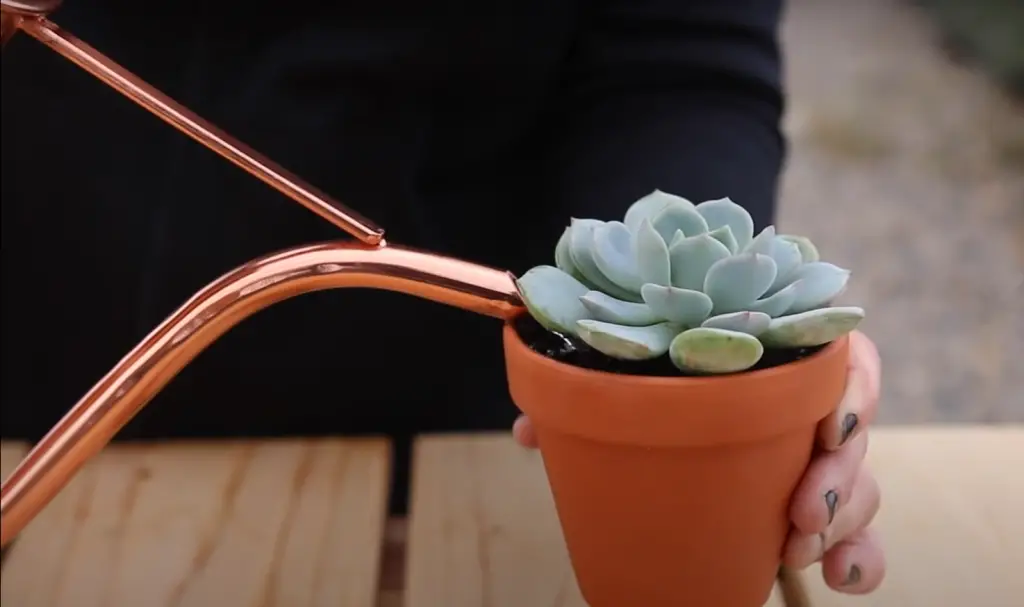
Additionally, be sure to use a pot with drainage holes at the bottom so that any excess water can easily escape. With the right soil and pot, you will be able to successfully grow beautiful succulents in your home.
What else should I do to care for my succulents?
In addition to providing the right environment, you should also be sure to trim off any dead or discoloured leaves. This will help ensure your succulent stays healthy and looks its best. Additionally, it’s important to rotate your pots occasionally so that all sides are exposed to light.
Finally, don’t forget to fertilise your succulents every month or two as this will help them grow and thrive. With the right care, you can enjoy healthy succulents for years to come!
Can I propagate my succulents?
Yes, it is possible to propagate a few types of succulents from existing plants. The most common method is to use stem or leaf cuttings which can be done by snipping a healthy piece of the plant and rooting it in soil.
You should also make sure that the new cutting gets ample light and air circulation as this will help it grow more quickly. With sufficient care, you should have success propagating your succulent!
Can I prune my succulents?
Yes, you can prune your succulents if they are getting too large or unruly. It’s best to use a sharp, sterile pruning tool and make sure to remove any dead leaves or stems as this will help encourage new growth.
Be careful not to over-prune your succulent, however – just take off what needs to go and then let it regrow. With careful pruning, you can keep your succulent looking its best!
How often should I report my succulents?
Repotting your succulent should only be done when absolutely necessary. Generally, you’ll want to wait until the roots have filled up most of the pot before moving to a larger one.
Additionally, it’s important to use a well-draining potting mix and make sure there is enough soil to keep the roots from drying out. With the right potting mix and ample care, you can successfully report your succulent with minimal stress or disruption.
Are there any tips for displaying my succulents?
Yes, there are plenty of ways you can display your succulents to show them off in their best light. Grouping similar succulents together in one pot can create a stunning arrangement while hanging terrariums or wall planters are great options for areas with limited space.
You can also use driftwood or other natural elements to add visual interest and texture to your display.
How do I know if my succulent is getting too much or not enough water?
The best way to tell whether your succulent is getting the right amount of water is to check the soil for moisture levels. If it’s still wet then don’t give it any more water until it has dried out completely, and if it’s dry then give it a good soak.
Additionally, pay attention to the leaves of your succulent – if they are wilting or yellowing then it’s likely that it’s not getting enough water. If you notice any signs of overwatering such as mould or root rot then it is best to act quickly and adjust your watering schedule accordingly.
How should I water my succulents?
Watering your succulent correctly is essential for its health and growth. It’s best to use a mister or spray bottle filled with room temperature water as this will help the roots absorb it more easily.
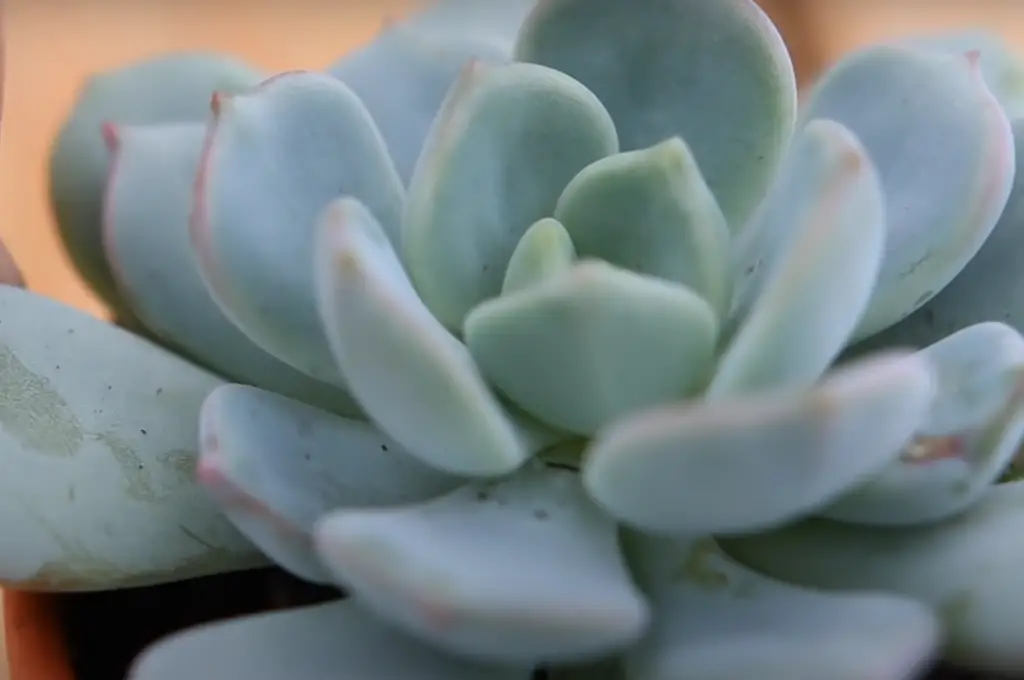
Additionally, make sure to give your succulent a thorough soak and allow the soil to dry out completely in between waterings.
How do I know when it’s time to report my succulents?
Repotting your succulent is only necessary once the roots have filled up most of the pot. Additionally, if you notice that the plant itself has outgrown its pot or has become root bound then it’s likely time for a larger one.
Another sign that your succulent needs repotting is if you notice that the soil is drying out too quickly – this can be a sign of compacted roots which need more space to breathe. With these tips in mind, you’ll be able to successfully report your succulent when the time comes.
Does my succulent need fertiliser?
Succulents generally only need to be fertilised once a month or so. You should always use a fertiliser specifically formulated for succulents and make sure to dilute it according to the manufacturer’s instructions.
Additionally, it’s important not to over fertilise your succulent as this can cause problems such as leaf burn or root rot. With the right amount of fertiliser, your succulent will get all the nutrients it needs to stay healthy and vibrant.
Do my succulents need a lot of light?
Succulents do need plenty of bright indirect sunlight in order to thrive. Be sure to position your plants so they can receive at least 4-6 hours of sunlight each day.
You can also supplement with artificial lighting if needed, however it’s best to use specialised grow lights designed for succulents as these provide the right spectrum and intensity of light. With sufficient light, your succulents will stay happy and healthy!
Does my succulent need to be pruned?
Pruning your succulents is only necessary if they are getting too large or unruly.
Additionally, make sure to remove any dead leaves or stems as this will help encourage new growth. With the right pruning techniques, you can keep your succulents looking their best!
Can I save my succulents if it starts to decline?
In some cases, you may be able to revive a declining succulent with proper care and attention. You should first check the light levels – is the plant receiving enough but not too much sunlight?
Additionally, check the soil for moisture levels – if it’s too wet or dry then you should adjust your watering schedule.
Lastly, make sure to provide adequate fertilisation and avoid overwatering as this can easily lead to root rot or other problems. With the right care, you may be able to save your succulents!
Does my succulent need to be misted?
Misting your succulent is not necessary and can in fact cause more harm than good. Succulents are designed to store moisture in their leaves and stems, so they don’t need additional water from misting.
If you do decide to mist your succulents, make sure to use a mister or spray bottle filled with room temperature water and apply the mist as lightly as possible.
Additionally, be sure to wipe away any excess moisture from the leaves and stems which could otherwise lead to rot or disease. With these tips in mind, you can help keep your succulent happy and healthy!
Useful Video: How and When to Water Succulents for Beginners | Succulent Tips for Beginners
Conclusion
A succulent is a great choice for any home garden, as it requires minimal care and can last for years. But, you do need to remember that they still need water!
The most important thing to bear in mind when caring for succulents is to get the balance right – not too much or too little water.
If you pay attention to the condition of the leaves and provide your plant with enough but not too much water, you’re sure to have a thriving succulent in no time! The key takeaway from this post: don’t be afraid of giving your succulent some water – just don’t overdo it! With that knowledge fresh on your palms, go forth and tend to those cacti-like greens.
References:
- https://www.usatoday.com/story/tech/science/2022/08/17/how-often-to-water-succulents/10099383002/
- https://www.retroden.com/blog/2018/how-much-how-often-to-water-succulent





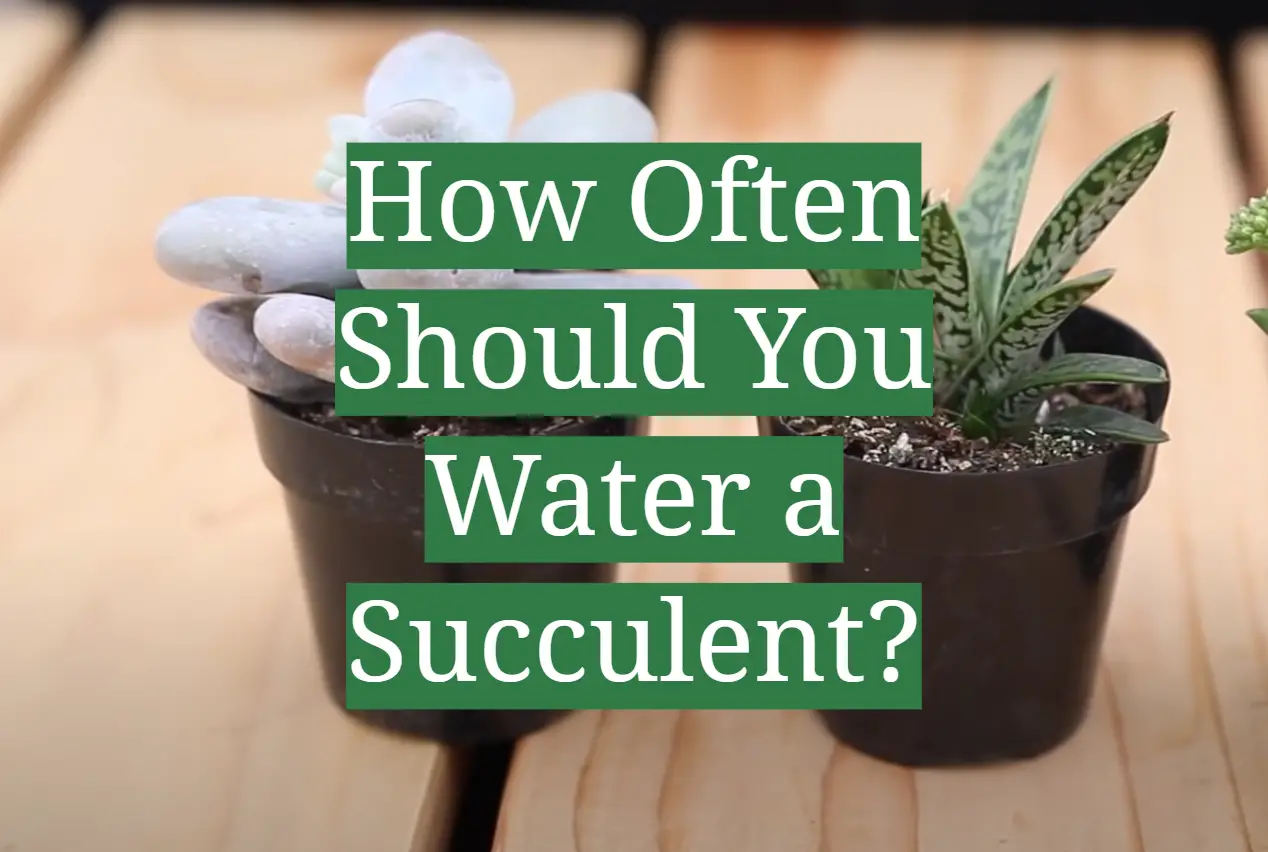



Leave a Reply
View Comments